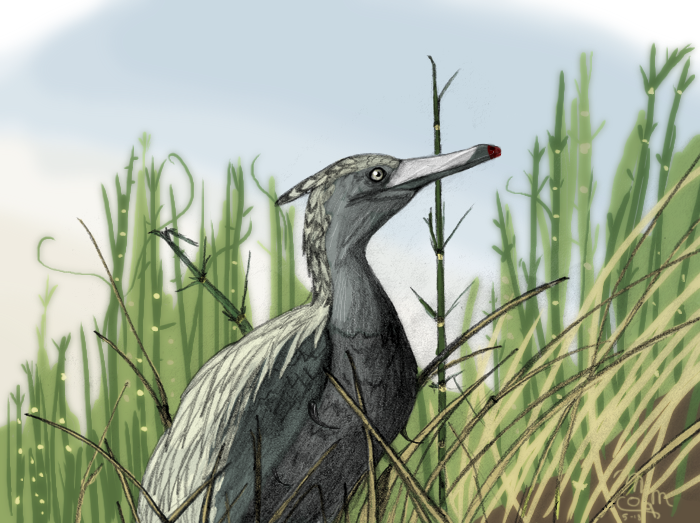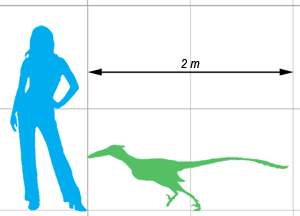home > natural history
Buitreraptor gonzalezorum
"Gonzalez's Vulture Roost thief"

Described in 2005, Buitreraptor was one of the first finds to reveal the distinctive character of the unenlagiines, a very unusual subfamily of ornithodesmids that existed during the mid-Cretaceous in South America. The fact that ornithodesmids lived in the southern hemisphere at all is fairly surprising, since the southern continents were completely separated from the northern ones during most of the groups evolution.
The first southern ornithodesmid (the "raptor" family) to be identified was Unenlagia, a much larger relative of Buitreraptor. Unenlagia was known only from a partial skeleton including hip and arm bones, but these were enough to immediately hint that the southern ornithodesmids differed significantly from their northern cousins like Velociraptor. For one, the arms of Unenlagia (and subsequently discovered unenlagines like Buitreraptor) had uniquely advanced adaptations, usually thought to be related to flight. While most maniraptorans could fold their wings to some extent, unenlagiines had extra flexibility in the forelimbs and could fold their arms tgihtly, completely against the body in the manner of modern birds. Buitreraptor itself also had an enormous wishbone much larger than other flightless raptors and filled with air sacs. Add to this the hypothesis (often supported by phylogenetic analysis) that the small, flying, southern hemisphere bird Rahonavis was itself an unenlagiine ornithodesmid, and it almost seems likely that the unenlagiines as a whole represent a branch of raptors that reached the southern continents by air and then lost flight.
Buitreraptor, and its gigantic relative Austroraptor, show that at least some of these southern raptors had profiles decidedly different from dromaeosaurine ornithodesmids, with long, narrow snouts, possibly indicating a diet of fish and other small animals, such as the legged snake Najash that lived alongside Buitreraptor.
The illustration here may look familiar - it's a repurposed version of an older drawing of Unenlagia. Unenlagia is not known from skull material, so most of the drawing was complete speculation based on Buitreraptor anyway. Another new addition was unprecedented in my paleoart at the time - grass! For years, common wisdom held that grass did not evolve until the Cenozoic era, but (also in 2005) dino dung was found in South America with primitive, reed-like grass in it. So some type of grass did exist along side the dinosaurs, at least in southern Gondwana, and it is depicted here growing sparsly among a more familiar Mesozoic plant, horsetails.
For more on Buitreraptor, see the Wikipedia article I helped edit.
Image Details:
Media: Graphite, digital coloring in Adobe Photoshop CS3
using WACOM Graphire 3
License:
ALL RIGHTS RESERVED
DESCRIPTION
Length: 2m (6.5ft)
Weight: 10kg (22lbs)
Location: Candeleros Formation, Neuquen, Argentina
Time: Cenomanian age, Upper Cretaceous (97 Ma)
CLASSIFICATION
Kingdom: Animalia
Phylum: Chordata
Class: Stem-Aves
Family: Ornithodesmidae
Subfamily: Unenlagiinae
Genus: Buitreraptor
Species: B. gonzalezorum
SYSTEMATICS
Sauropsida
Diapsida
Archosauria
Ornithosuchia
Dinosauria
Theropoda
Coelurosauria
Maniraptora
Dromaeosauridae
Unenlagiinae
